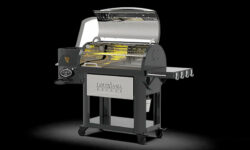The most common problem for wood stove owners is a failure to build the initial fire hot enough. Your stove functions best when you begin with a hot fire and don’t be afraid, the stove is built for it. 3 tips to starting a hot fire are: use dry, seasoned wood, make sure the wood isn’t too big and use enough kindling. All good fires start with dry, seasoned wood. If you are buying wood, try to purchase your wood from a reliable source to make sure the wood is fully seasoned. Look for logs that have darkened, dried out ends with cracks, called checks.
Well-seasoned wood will be lighter in weight than partially seasoned, green wood and will have a hollow sound if you knock them together. Wood that is not seasoned, green wood, actually contains up to 50% of it’s weight in moisture which equals up to a gallon of water per stove load. This moisture has to be burned off before the heat can be released into your home. Any energy your stove uses to burn water is wasted heat energy that you will not feel. If you hear a hissing sound or see moisture coming from your wood as it burns, that means it is green and needs to be seasoned for at least 6 months.
It is also important not to burn cardboard or wood that has binders, like plywood or particle board. The glue or other binders can cause excessive burn temperatures and may result in actual damage to the stove or cause it to function improperly. If you are gathering your own firewood, plan a year or two ahead so the wood you cut split and stack can season properly. Remember that wood does not dry well until it is split. Use a splitting maul or a hydraulic splitter to split the wood. Logs that are 3 to 6 inches across are the best width for building a hot fire and make sure you have split plenty of smaller pieces for kindling to start the fire.
Be careful how you stack your wood. Leave enough space between the split logs to allow air to flow and keep the top of the stack covered and protected from moisture so it can season effectively. Keep the stacks sides exposed to expedite the drying process. Once your wood has been fully seasoned, store it for the winter where it is sheltered from rain and snow and close enough to the house to be convenient but not against the house which will slow the drying process and potentially cause pest problems.
If you need to build a woodshed, good plans can be found on the internet. You may want to arrange your wood storage so that the softer wood is stored separately from the harder woods. Softer woods like pine and poplar creates shorter burning fires, good for fall and spring. Better woods such as oak and maple, larch and fir burn longer and are best for the colder winter days and nights.










